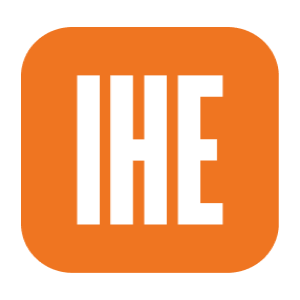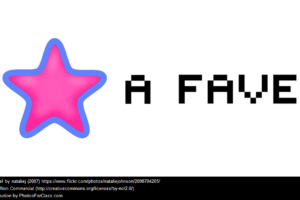
3 Questions for Professor Mary Wright
Last year, Brown University announced that Mary Wright was embarking on a new adventure in early 2025.
If you are anywhere near or around the CTL world, you likely know (or know about) Mary Wright. Her 2023 JHU Press publication, Centers for Teaching and Learning: The New Landscape in Higher Education, is a must-read for every university leader. Mary—along with Tracie Addy, Bret Eynon and Jaclyn Rivard—also has a forthcoming book with Johns Hopkins (2026), which will provide a 20-plus-year look at continuities and changes in the field of educational development.
Therefore, it was big news earlier this year when Mary moved from her role as associate provost for teaching and learning and executive director of Sheridan Center at Brown to a new position as a professor of education scholarship at the University of Sydney. With Mary now more than six months in her new role, this was a good time to catch up with how things are going.

Q: Tell us about your new role at the University of Sydney. What does a faculty appointment in Australia constitute in terms of teaching, research and administrative responsibilities?
A: As in the U.S., a faculty appointment (here, called an academic appointment) varies greatly across and even within Australian institutions. In my role, I serve as a Horizon Educator, an education-focused academic role, which carries a heuristic of 70 percent time to education, 20 percent to scholarship and 10 percent to leadership or service-related activities. Like my prior 20-plus years of experience in the U.S., I am still an academic developer (called an educational developer in the U.S.), which means that education most frequently involves teaching and mentoring other academics as learners.
I am a level-E academic, which is akin to a full professor role in the U.S. (The trajectory starts at level A, which encompasses associate lecturer and postdoctoral fellows and goes through level B [lecturer], level C [senior lecturer], level D [associate professor] and level E [professor].)
There are many differences between U.S. and Australian higher education, but I’ll highlight two here in relation to those who work in CTLs. The first and most significant is that, in the U.S., educational developers are often positioned as professional staff. In Australia, many universities treat this work with parity to other academics. I feel that this substantially raises the credibility and value of academic development.
Second, professional learning around teaching is a required part of many academics’ contracts, initially or for “confirmation,” and it is structured into their workloads. I first worried that this would prompt a good deal of reactance, but I have not found this to be the case. I now find this to be a more equitable system for students (and academic success), compared to the U.S.’s (primarily) voluntary approach.
Q: Moving from Rhode Island to Australia is a big move. What is it about the University of Sydney that attracted you to the institution, and why did you make this big move at this point in your career?
A: Three factors attracted me to the University of Sydney. First, I was attracted to what I will call their organizational honesty. The institution was very open that they were not where they wanted to be in regard to teaching and the student experience; they wanted to be a different kind of institution. They also had a very clear theory of change, mapping very much onto metaphors I write about elsewhere: requiring convening and community building (hub); support of individual career advancement (incubator); development of evidence-based practice, such as the scholarship of teaching and learning (sieve); and advancing the value of teaching and learning through recognition and reward (temple).
Specifically, USyd was investing in over 200 new Horizon Educator positions, education-focused academics charged to be educational leaders. One part of my role is to work with this amazing group of academics to advance their own careers, as well as to realize the institution’s ambitions for enhanced teaching effectiveness. To anchor this work at a macro level, USyd also had been working very hard on developing and rolling out a new Academic Excellence Framework, which provides a clear pathway to the recognition and reward of education—in addition to other aspects of the academic role
The University of Sydney is also making a significant investment in grants to foster the scholarship of teaching and learning, which has been a long-standing interest of mine but was often done “off the side of the desk.” My role involves working with people, programs and practices to facilitate SoTL.
In addition to university strategy, I was attracted by the opportunity to work with Adam Bridgeman and colleagues in the university’s central teaching and learning unit. Educational Innovation has been engaged in very interesting high-level work around AI and assessment, as well as holistic professional learning to support academics, but like many CTLs, it has been stretched since COVID to advance a growing number of institutional aims. Because of my prior leadership in CTLs, I felt like I could also contribute in this space.
Q: Pivoting from a university leadership staff role to a faculty role is appealing to many of us in the nonfaculty educator world. (Although I know you also had a faculty position at Brown). Can you share any advice for those who might want to follow in your footsteps?
A: For some context, I started my career in the early 2000s in a professional staff role in a CTL and also occasionally adjuncted. I became a research scientist in the CTL, then moved to direct a CTL in 2016 and had an affiliate faculty position (with the staff/administrative role as primary). In 2020, I then moved to a senior administration role (again, my primary role was professional staff). So, I have worn a number of hats.
Three factors have been helpful in transitioning across roles. First, I love to write, and while the scholarly work rarely “counted” for anything in these series of positions, I think it helped me advance to the next step. Second, it’s important to read a lot to stay current with the vast literature on teaching and learning. I think this can add value to my work with individual academics—to help them publish—as well as my work on committees, where there is often some literature to cite on the topic at hand.
Finally, I think professional associations can be very helpful in building bridges and networks, especially for those considering an international transition. In the U.S., the POD Network was a key source of support. Now, before even applying to my current role, I subscribed to the newsletter of HERDSA (Higher Education Research and Development Society of Australasia) and I participated in one of their mentoring programs. I also serve as a co-editor of the International Journal for Academic Development, which exposed me to articles about Australian academic development, and I got some generous and wise advice from Australian and New Zealand IJAD colleagues about the job search.
Source link


